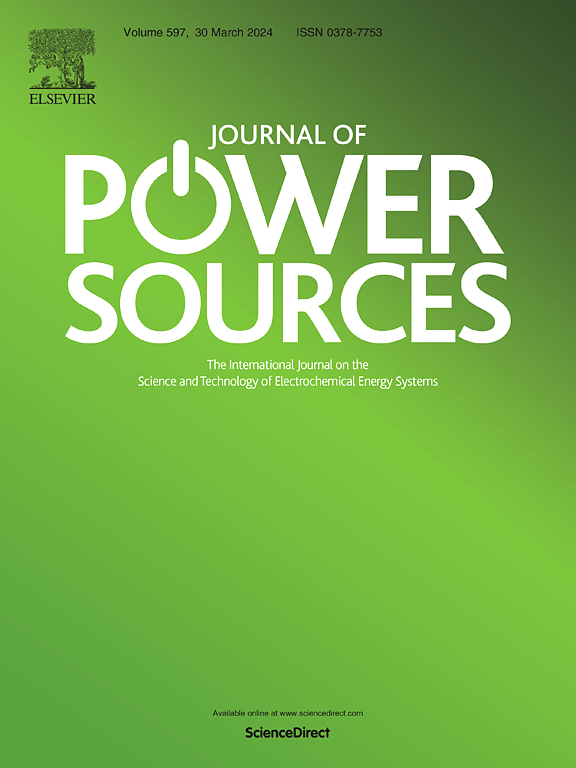Redox-active hybrid-solvent-in-salt electrolyte for high energy density supercapacitor
IF 8.1
2区 工程技术
Q1 CHEMISTRY, PHYSICAL
引用次数: 0
Abstract
A major limitation of supercapacitors (SCs) is their lower energy density compared to batteries, despite their high rate capability and long cycle life. One promising approach to overcoming this challenge is the use of high-concentration electrolytes, such as water-in-salt electrolyte (WiSE) and its redox-active (RA) derivatives, which leverage redox reactions to enhance energy density. However, these systems are constrained by the low solubility of RA species, limiting further performance improvements. To address this, we introduce a novel redox-active aqueous/organic hybrid-solvent-in-salt electrolyte (RA-HiSE), which significantly improves the solubility of RA species. As a result, SCs utilizing RA-HiSE achieve a remarkable three-fold increase in energy density (251.2 W h kg−1 at 2.5 A g−1) compared to those with RA-WiSE, along with excellent capacity retention (95 % over 10,000 cycles at 5 A g−1). In addition to enhancing energy density, the RA-HiSE system offers superior temperature stability compared to RA-WiSE. This development represents a key breakthrough in the advancement of next-generation electrolytes for high-energy-density SCs.

求助全文
约1分钟内获得全文
求助全文
来源期刊

Journal of Power Sources
工程技术-电化学
CiteScore
16.40
自引率
6.50%
发文量
1249
审稿时长
36 days
期刊介绍:
The Journal of Power Sources is a publication catering to researchers and technologists interested in various aspects of the science, technology, and applications of electrochemical power sources. It covers original research and reviews on primary and secondary batteries, fuel cells, supercapacitors, and photo-electrochemical cells.
Topics considered include the research, development and applications of nanomaterials and novel componentry for these devices. Examples of applications of these electrochemical power sources include:
• Portable electronics
• Electric and Hybrid Electric Vehicles
• Uninterruptible Power Supply (UPS) systems
• Storage of renewable energy
• Satellites and deep space probes
• Boats and ships, drones and aircrafts
• Wearable energy storage systems
 求助内容:
求助内容: 应助结果提醒方式:
应助结果提醒方式:


